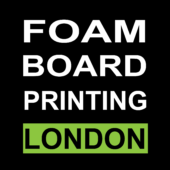A Beginner’s Guide to Printing on Foam Board: Tips and Techniques
Introduction: Foam board, also known as foam core or foam panel, is a versatile material commonly used for various DIY projects, presentations, displays, and signage. Its lightweight yet sturdy nature makes it an ideal choice for printing vibrant graphics and text. Whether you’re a hobbyist, a small business owner, or a student working on a project, knowing how to print on foam board can elevate the quality of your work. In this guide, we’ll explore the methods, tips, and techniques to achieve professional results when printing on foam board.
Choosing the Right Printer: Before diving into the printing process, it’s essential to ensure you have the right equipment. Not all printers are suitable for printing on foam board. Inkjet printers are generally preferred for their ability to produce high-quality prints with vibrant colors. Additionally, look for printers that offer a flatbed printing option or have a straight paper path to accommodate thicker materials like foam board.
Selecting the Proper Foam Board: The quality of the foam board you choose can significantly impact the printing outcome. Opt for foam boards with a smooth, even surface to ensure the ink adheres properly and produces crisp images. Consider the thickness of the foam board as well; thicker boards provide more stability but may require adjustments to your printer settings.
Preparing Your Artwork: Before sending your design to the printer, make sure it’s properly formatted for printing on foam board. Use design software such as Adobe Photoshop or Illustrator to create your artwork, ensuring it’s set to the correct dimensions and resolution. Keep in mind any borders or margins to prevent important elements from being cut off during printing.
Printing Process: Once your artwork is ready, it’s time to print on foam board. Begin by adjusting the printer settings to accommodate the thickness of the foam board. Most printers have manual settings that allow you to adjust the paper thickness or print quality. Experiment with test prints on regular paper to fine-tune the settings before printing on the foam board itself.
Securing the Foam Board: To prevent the foam board from shifting or becoming misaligned during printing, it’s essential to secure it properly on the printer’s flatbed. Use removable adhesive or masking tape to attach the foam board to the printer bed, ensuring it lays flat and remains in place throughout the printing process.
Printing and Finishing: Once everything is set up, proceed with printing your design onto the foam board. Monitor the printing process closely to ensure the ink adheres evenly and the colors appear as expected. Once the printing is complete, allow the foam board to dry thoroughly before handling it to prevent smudging or smearing.
Conclusion: Printing on foam board opens up a world of creative possibilities for artists, designers, educators, and businesses alike. By following the tips and techniques outlined in this guide, you can achieve professional-quality prints that showcase your work effectively. Remember to invest in high-quality materials, adjust printer settings accordingly, and take your time to ensure the best results. With practice and attention to detail, printing on foam board can become a seamless process that enhances your projects and presentations.
